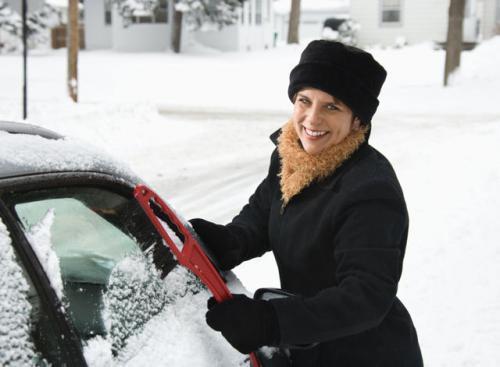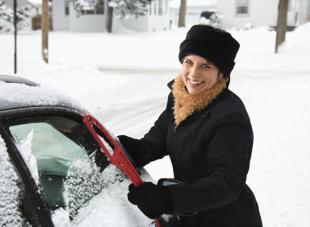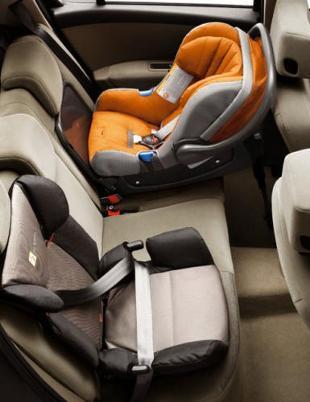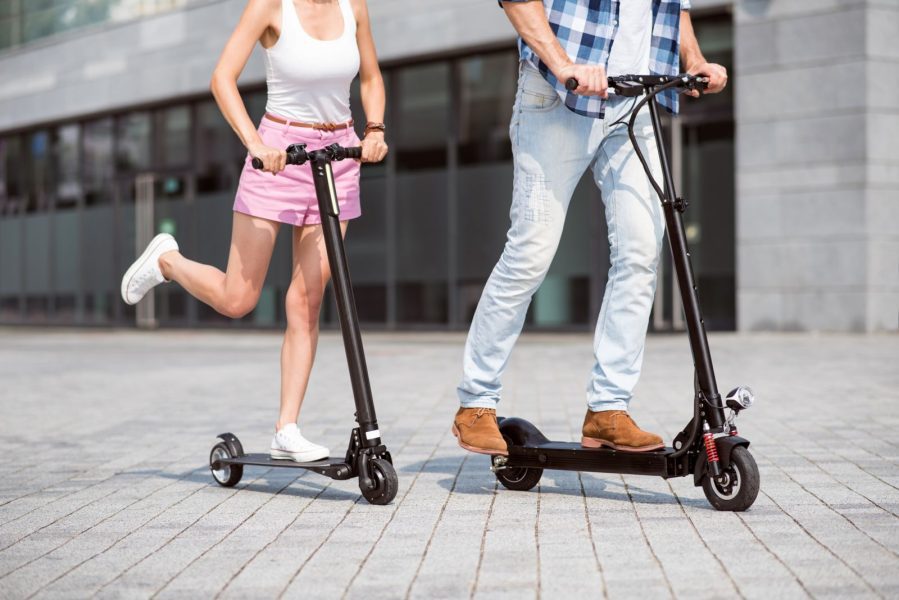
Vacation by car
 A family trip during the winter holidays is a double or even triple task for a home driver.
A family trip during the winter holidays is a double or even triple task for a home driver.
 First of all, he must make sure that the car is properly equipped and its performance has been checked, which is especially important on icy and snowy roads.
First of all, he must make sure that the car is properly equipped and its performance has been checked, which is especially important on icy and snowy roads.
Secondly, he must very consistently follow the rules of winter driving, not only set out in the traffic rules, but also arising from common sense and concern for the life and health of the family.
Thirdly, a trip with a child is the need to remember many rules and regulations for transporting children.
From chain to flashlight
We wrote about the proper equipment of the car before our holiday trips, so today let's just remember the basics. So, first of all, you need to carefully plan your itinerary before you hit the road. Don't forget your driver's license, registration certificate and car insurance. It should also be remembered that winter tires are not enough in the mountains - you can hit places where chains will also be needed.
You must also ensure that your baggage is properly packed. This is important when, in addition to bags or suitcases, you also have skis or snowboards in the trunk or on the roof. They need to be attached in such a way that they do not fall off the roof and do not hang out inside. And, of course, we must not forget about absolutely fundamental things. So you need to check if you have a first aid kit, a triangle, a fire extinguisher, a tow rope, a signal vest, spare light bulbs, gloves, an ice scraper, a flashlight and a working spare tire and jack. You should also check the oil level, brake and washer fluid, check the pressure in the tires and headlights. Also, do not place loose items on the rear shelf.
Economical driving is very important for a driver who is driving on a longer route. To burn as little fuel as possible, shift into a higher gear as quickly as possible. It must be activated no later than 2.500 rpm for a petrol engine or 2.000 rpm for a diesel engine. Driving at idle is also unprofitable: if the driver wants to slow down or stop, he must roll in gear, switching to a lower one. This is something worth retraining. It is also worth choosing a route at least a little longer, but better cleared of snow and guaranteeing a smooth ride without standing in traffic jams.
The art of starting and braking
A driver prepared in this way can go on vacation. This is where knowing how your car handles in the snow comes in handy. Let us quote the advice of Violetta Bubnowska, director of the Tor Rakietowa Driving Technology Center in Wroclaw. Generally speaking, it advises calmness and composure. In detail, he advises:
– adjust the speed according to the prevailing conditions
– remember that the braking distance on an icy surface is much longer than on a dry or even wet surface
– keep a safe distance from the vehicle in front
– install good winter tires and chains if necessary
- check the brakes in the car
- clear the car of snow
- do not panic when skidding
- drive carefully
– move calmly, on “straight wheels”
– avoid high engine speeds when pulling away
- do not make sudden movements with the steering wheel
– anticipate traffic situations and the behavior of other road users.
Child inside and next to the car
 And, finally, the third task of a family driver: the safety of children transported and located next to the car.
And, finally, the third task of a family driver: the safety of children transported and located next to the car.
Studies by British scientists* have shown that leaving a child in a vehicle without proper care is a great danger to a child. An accident can also happen on the road, for example, in the entrance under the house.
The child should not be left alone in the car for a minute. He is not fully aware of the danger that his behavior can cause. If for various reasons you have to leave the child alone in the car, it is worth limiting the possibility of dangerous games for him.
First, keep all dangerous objects away from the child. Secondly, even when you literally need to get out of the car for a second, always turn off the engine and take your keys with you. This will prevent the child from accidentally starting the car and complicate the task of the hijacker. It happens that the thief left in a car with a child sitting in the back seat. A good solution after removing the keys from the ignition is also to lock the steering wheel by turning it until it locks.
The reverse maneuver when parking in front of the house or in the garage is very dangerous. The driver's field of vision is then very limited, and it is difficult to see children playing on the sidewalk in the mirrors. It's always worth checking where they are - take a close look at the vehicle to see if they're hidden somewhere. The maneuver should be done very slowly so that you have time to inspect the car.
Safe Technologies
Good assistants in ensuring the safety of children are, for example, car anti-theft systems that protect the car from accidental operation. In addition to turning the key in the ignition, they also require pressing a hidden button. Power windows are usually equipped with sensors that cause the windshield to stop when it encounters resistance. This can prevent your child from pinching their fingers.
Place with rules
It should be remembered that children from 3 to 12 years old, whose height does not exceed 150 cm, must be transported in special child seats or car seats. The seat must have a certificate and three-point seat belts. The seat is used not only to raise the child (so that he can see the road better), but also to adjust the belt for his height and weight. Children from 0 to 2 years of age weighing up to 13 kg must be carried in a rear-facing child seat, preferably in the back seat. In vehicles equipped with airbags, a child seat must not be placed in the front seat. If the airbags were inflated with gas, the child would be pushed up strongly due to the small distance between the seatback and the dashboard.
*(Royal Society for the Prevention of Accidents (2008) Children in and around cars, www.rospa.com
